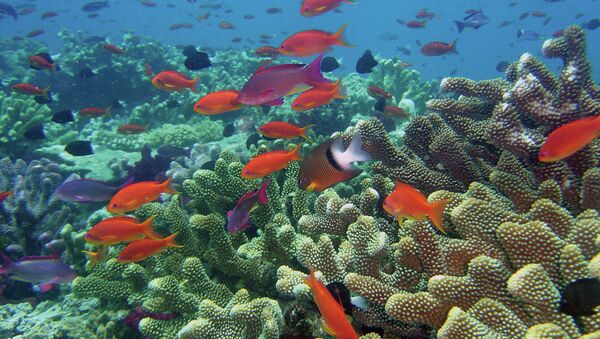According to the findings, published on Friday in the journal Nature, coral larvae with parents from the warmer waters of the north were up to ten times more likely to survive heat stress, compared to those with parents only from the waters of the south, which was two degrees colder.
"This discovery adds to our understanding of the potential for coral to cope with hotter oceans," said Line Bay, an evolutionary ecologist from the Australian Institute of Marine Science, one of the authors of the study.
"This is an occasion for hope and optimism about coral reefs and the marine life that thrive there," said co-author Mikhail Matz, a biology professor at The University of Texas at Austin.

"Coral larvae can move across oceans naturally, but humans could also contribute, relocating adult corals to jump-start the process."
Coral reefs provide the basis for ecosystems throughout the tropics, and support around 25% of all marine life. However, rising ocean temperatures, as well as increased levels of carbon dioxide in the ocean, puts the reef at risk of coral bleaching and reduces the calcification of important reef-building organisms.

According to Australia's Great Barrier Reef Authority, the sea surface temperature in the Great Barrier Reef has increased by about 0.4°C in the last 30 years, and by 2100 could be as much as 1°C to 3°C warmer than the present average temperatures.
A study published in the Proceedings of the National Academy of Sciences journal in 2012 found that the Great Barrier Reef had lost more than half its coral cover since 1985 as a result of tropical cyclones, outbreaks of crown-of-thorns starfish and coral bleaching.
The pattern of decline varied among regions of the reef, and while coral can regain their cover, an interval of ten to 20 years is required after such disturbances to slowly regain coral cover.



